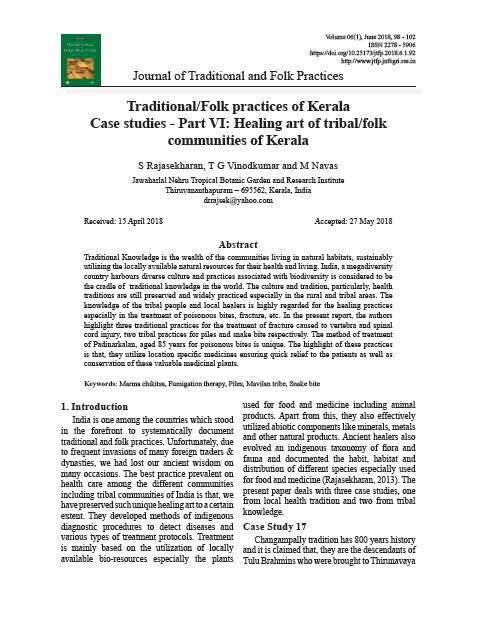Traditional/Folk practices of Kerala Case studies - Part VI: Healing art of tribal/folk communities of Kerala
Keywords:
Marma chikitsa, Fumigation therapy, Piles, Mavilan tribe, Snake biteAbstract
Traditional Knowledge is the wealth of the communities living in natural habitats, sustainably utilizing the locally available natural resources for their health and living. India, a megadiversity country harbours diverse culture and practices associated with biodiversity is considered to be the cradle of traditional knowledge in the world. The culture and tradition, particularly, health traditions are still preserved and widely practiced especially in the rural and tribal areas. The knowledge of the tribal people and local healers is highly regarded for the healing practices especially in the treatment of poisonous bites, fracture, etc. In the present report, the authors highlight three traditional practices for the treatment of fracture caused to vertebra and spinal cord injury, two tribal practices for piles and snake bite respectively. The method of treatment of Padinarkalan, aged 85 years for poisonous bites is unique. The highlight of these practices is that, they utilize location specific medicines ensuring quick relief to the patients as well as conservation of these valuable medicinal plants.


